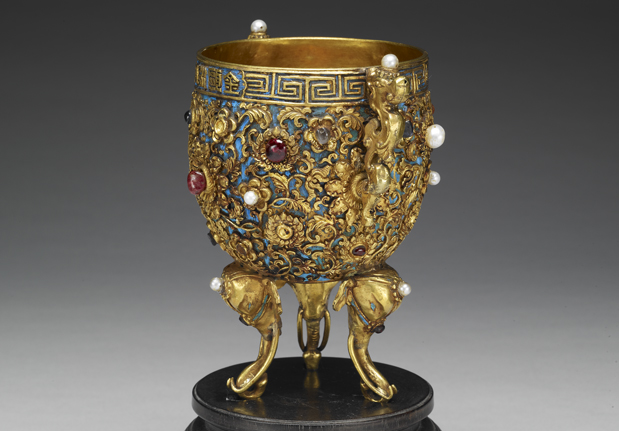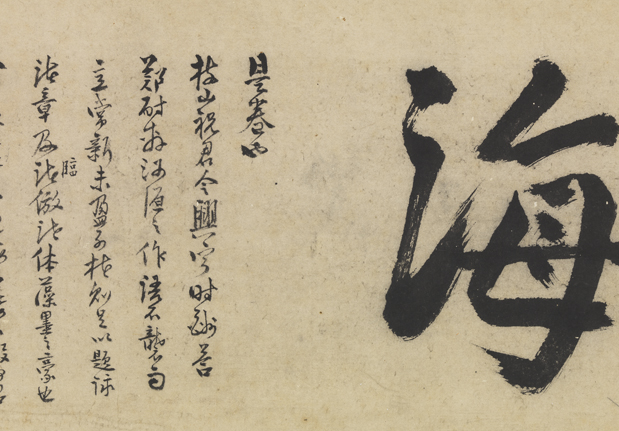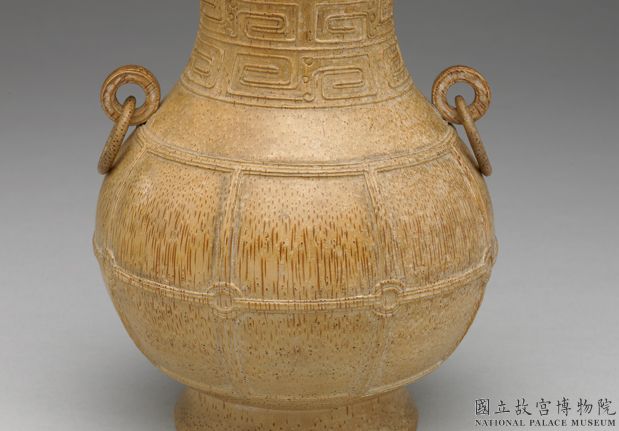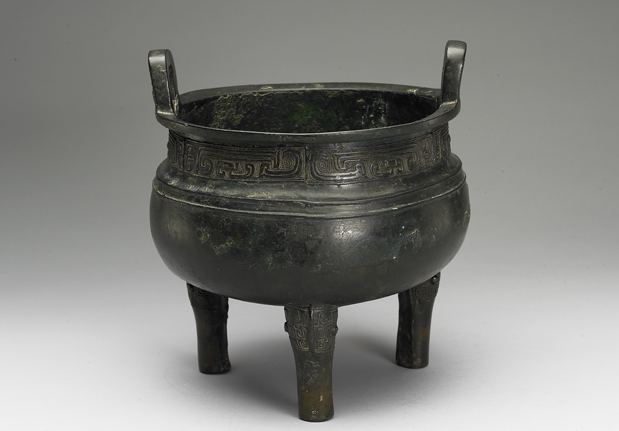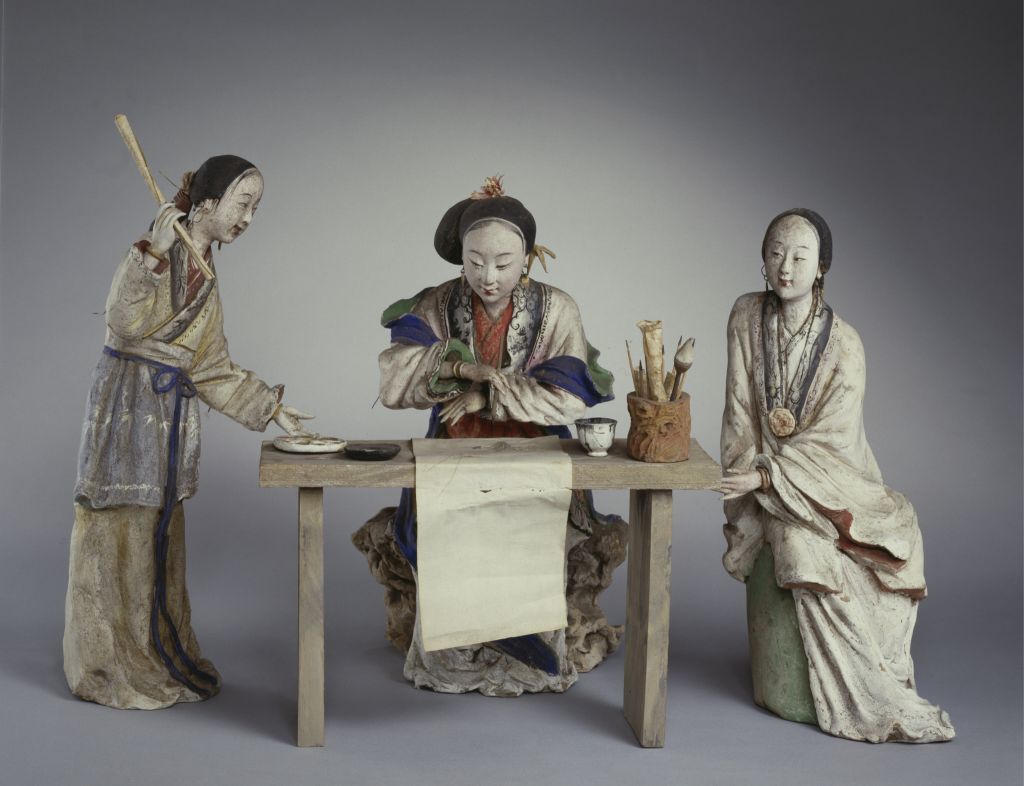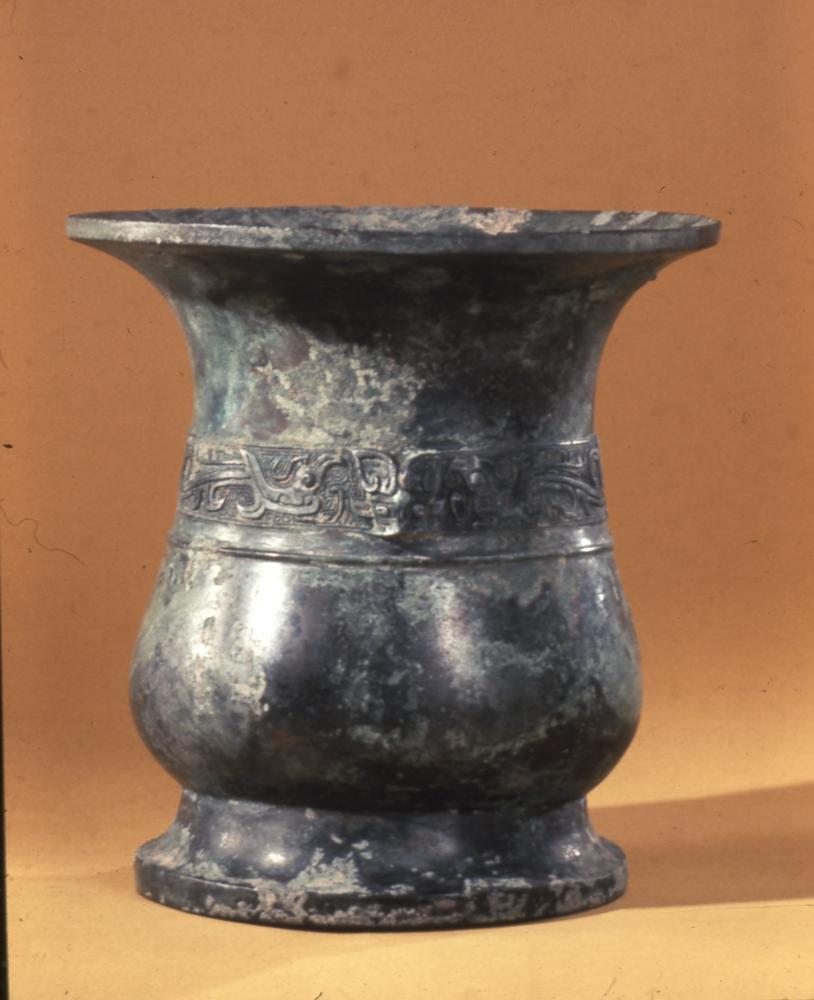[Dong Qichang’s real cursive running script in Linchunhua Pavilion]
“Linchunhua Pavilion Script” volume, Ming Dynasty, Dong Qichang’s book, paper book, real cursive running script, 10 volumes, 26.6 cm in length and 28.9 cm in width
The text of Chunhua Pavilion Post is omitted
Each volume has its own title and seal
Volume 1: “On the first day of the first lunar month of Renshen, Dong Qichang came.” The seal was “Zongbo Bachelor” and “Dong Xuanzai”
Volume 2: “Boat in the Qingjiang River, Pulin. Qichang.” Seal “Zongbo Bachelor” and “Dong Xuanzai”
Volume 3: “The twenty-fourth boat of the first month of Renshen came to the new city. Qichang.” With the seal of “Zongbo Bachelor” and “Dong Xuanzai”
Volume IV: “Zhouci Ancient City. Its Changlin.” Seal “Dong Qichang” and “Dong Xuanzai”
Volume 5: “In the course of the boat’s journey through Jingmen Road, the window is too dark, and it is too abstruse to write, so you can copy it with your pen, so you can see that this volume is better than the book you write on weekdays. It is very knowledgeable.”
Volume 6: “Boating in Qingyuan Posthouse. Its Changlin.” Seal “Dong Qichang”
Volume 7: “Near Peach Blossom Mouth. Qichang.” Seal “Dong Qichang”
Volume 8: “Its Changzhou is next to Yang Estate to guard the wind.” The seal is “Zongbo Bachelor” and “Dong Xuanzai”
Volume 9: “Zhouci Heyi. Its Changlin.” Seal “Zongbo Bachelor” and “Dong Xuanzai”
Volume 10: “From the morning of the 29th, I wrote several lines of the regular script Heart Sutra, and I felt that the calligraphy and ink techniques seemed to be different. Because of the last volume of the Chunhua Postscript, I had a good mind. The so-called” Lang Guan Bi Ji “by Zhang Changshi was the foundation of the Kennedy Kuang Cao. It was also very well known.” The seal was “Zongbo Scholar” and “Dong Xuan Zai”
At the front of each volume, there are “Baoyun Lou Zang”, and at the back of each volume, there are “Baoyun Lou Zang” and “□ Shan”. In addition, at the beginning of the first volume, there are “Qianlong Imperial Treasure” and “Shiqu Treasure Collection” seals. The inscription and postscript are printed with: “Qianlong Appreciation”, “Sanxi Hall Fine Seal”, “Suitable for descendants”, and “Baoyun Tower”
This post was placed in the fifth year of Chongzhen (1632) of the Ming Dynasty. The number of posts in each volume is different from the Chunhua Pavilion Post, which was published by Su Fu in the Ming Dynasty
Dong Qichang’s initial calligrapher Yan Zhenqing’s “Duobao Pagoda”, and later changed to study Zhong, Wang, Yu and Zhe. At the time of this post, he was at the age of 78, and he was the work of his octogenarian. At that time, the art of calligraphy had reached the peak of maturity. Through the use of pens in different calligraphic styles of this post, you can understand and master the overall picture of its calligraphy characteristics. Although this book is a copy, it is not rigidly copied from the original, but based on its own intention. Therefore, it still reflects its own natural stretch and the calligraphy characteristics of beauty and awkwardness.
![图片[1]-Dong Qichang’s real cursive script is in Chunhua Pavilion-China Archive](https://chinaarchive.net/Ming dynasty/model calligraphy/19063[1024].jpg)
![临淳化阁帖册第一卷之二 图片[2]-Dong Qichang’s real cursive script is in Chunhua Pavilion-China Archive](https://chinaarchive.net/Ming dynasty/model calligraphy/19062[1024].jpg) 临淳化阁帖册第一卷之二
临淳化阁帖册第一卷之二![临淳化阁帖册第一卷之一 图片[3]-Dong Qichang’s real cursive script is in Chunhua Pavilion-China Archive](https://chinaarchive.net/Ming dynasty/model calligraphy/19061[1024].jpg) 临淳化阁帖册第一卷之一
临淳化阁帖册第一卷之一![临淳化阁帖册第一卷之封面 图片[4]-Dong Qichang’s real cursive script is in Chunhua Pavilion-China Archive](https://chinaarchive.net/Ming dynasty/model calligraphy/19093[1024].jpg) 临淳化阁帖册第一卷之封面
临淳化阁帖册第一卷之封面![临淳化阁帖册第一卷之七 图片[5]-Dong Qichang’s real cursive script is in Chunhua Pavilion-China Archive](https://chinaarchive.net/Ming dynasty/model calligraphy/19067[1024].jpg) 临淳化阁帖册第一卷之七
临淳化阁帖册第一卷之七![临淳化阁帖册第一卷之六 图片[6]-Dong Qichang’s real cursive script is in Chunhua Pavilion-China Archive](https://chinaarchive.net/Ming dynasty/model calligraphy/19066[1024].jpg) 临淳化阁帖册第一卷之六
临淳化阁帖册第一卷之六![临淳化阁帖册第一卷之五 图片[7]-Dong Qichang’s real cursive script is in Chunhua Pavilion-China Archive](https://chinaarchive.net/Ming dynasty/model calligraphy/19065[1024].jpg) 临淳化阁帖册第一卷之五
临淳化阁帖册第一卷之五![临淳化阁帖册第一卷之四 图片[8]-Dong Qichang’s real cursive script is in Chunhua Pavilion-China Archive](https://chinaarchive.net/Ming dynasty/model calligraphy/19064[1024].jpg) 临淳化阁帖册第一卷之四
临淳化阁帖册第一卷之四![临淳化阁帖册第一卷之十一 图片[9]-Dong Qichang’s real cursive script is in Chunhua Pavilion-China Archive](https://chinaarchive.net/Ming dynasty/model calligraphy/19071[1024].jpg) 临淳化阁帖册第一卷之十一
临淳化阁帖册第一卷之十一![临淳化阁帖册第一卷之十 图片[10]-Dong Qichang’s real cursive script is in Chunhua Pavilion-China Archive](https://chinaarchive.net/Ming dynasty/model calligraphy/19070[1024].jpg) 临淳化阁帖册第一卷之十
临淳化阁帖册第一卷之十![临淳化阁帖册第一卷之九 图片[11]-Dong Qichang’s real cursive script is in Chunhua Pavilion-China Archive](https://chinaarchive.net/Ming dynasty/model calligraphy/19069[1024].jpg) 临淳化阁帖册第一卷之九
临淳化阁帖册第一卷之九![临淳化阁帖册第一卷之八 图片[12]-Dong Qichang’s real cursive script is in Chunhua Pavilion-China Archive](https://chinaarchive.net/Ming dynasty/model calligraphy/19068[1024].jpg) 临淳化阁帖册第一卷之八
临淳化阁帖册第一卷之八![临淳化阁帖册第一卷之十五 图片[13]-Dong Qichang’s real cursive script is in Chunhua Pavilion-China Archive](https://chinaarchive.net/Ming dynasty/model calligraphy/19075[1024].jpg) 临淳化阁帖册第一卷之十五
临淳化阁帖册第一卷之十五![临淳化阁帖册第一卷之十四 图片[14]-Dong Qichang’s real cursive script is in Chunhua Pavilion-China Archive](https://chinaarchive.net/Ming dynasty/model calligraphy/19074[1024].jpg) 临淳化阁帖册第一卷之十四
临淳化阁帖册第一卷之十四![临淳化阁帖册第一卷之十三 图片[15]-Dong Qichang’s real cursive script is in Chunhua Pavilion-China Archive](https://chinaarchive.net/Ming dynasty/model calligraphy/19073[1024].jpg) 临淳化阁帖册第一卷之十三
临淳化阁帖册第一卷之十三![临淳化阁帖册第一卷之十二 图片[16]-Dong Qichang’s real cursive script is in Chunhua Pavilion-China Archive](https://chinaarchive.net/Ming dynasty/model calligraphy/19072[1024].jpg) 临淳化阁帖册第一卷之十二
临淳化阁帖册第一卷之十二![临淳化阁帖册第一卷之十九 图片[17]-Dong Qichang’s real cursive script is in Chunhua Pavilion-China Archive](https://chinaarchive.net/Ming dynasty/model calligraphy/19079[1024].jpg) 临淳化阁帖册第一卷之十九
临淳化阁帖册第一卷之十九![临淳化阁帖册第一卷之十八 图片[18]-Dong Qichang’s real cursive script is in Chunhua Pavilion-China Archive](https://chinaarchive.net/Ming dynasty/model calligraphy/19078[1024].jpg) 临淳化阁帖册第一卷之十八
临淳化阁帖册第一卷之十八![临淳化阁帖册第一卷之十七 图片[19]-Dong Qichang’s real cursive script is in Chunhua Pavilion-China Archive](https://chinaarchive.net/Ming dynasty/model calligraphy/19077[1024].jpg) 临淳化阁帖册第一卷之十七
临淳化阁帖册第一卷之十七![临淳化阁帖册第一卷之十六 图片[20]-Dong Qichang’s real cursive script is in Chunhua Pavilion-China Archive](https://chinaarchive.net/Ming dynasty/model calligraphy/19076[1024].jpg) 临淳化阁帖册第一卷之十六
临淳化阁帖册第一卷之十六![临淳化阁帖册第一卷之二十三 图片[21]-Dong Qichang’s real cursive script is in Chunhua Pavilion-China Archive](https://chinaarchive.net/Ming dynasty/model calligraphy/19083[1024].jpg) 临淳化阁帖册第一卷之二十三
临淳化阁帖册第一卷之二十三![临淳化阁帖册第一卷之二十二 图片[22]-Dong Qichang’s real cursive script is in Chunhua Pavilion-China Archive](https://chinaarchive.net/Ming dynasty/model calligraphy/19082[1024].jpg) 临淳化阁帖册第一卷之二十二
临淳化阁帖册第一卷之二十二![临淳化阁帖册第一卷之二十一 图片[23]-Dong Qichang’s real cursive script is in Chunhua Pavilion-China Archive](https://chinaarchive.net/Ming dynasty/model calligraphy/19081[1024].jpg) 临淳化阁帖册第一卷之二十一
临淳化阁帖册第一卷之二十一![临淳化阁帖册第一卷之二十 图片[24]-Dong Qichang’s real cursive script is in Chunhua Pavilion-China Archive](https://chinaarchive.net/Ming dynasty/model calligraphy/19080[1024].jpg) 临淳化阁帖册第一卷之二十
临淳化阁帖册第一卷之二十![临淳化阁帖册第一卷之二十七 图片[25]-Dong Qichang’s real cursive script is in Chunhua Pavilion-China Archive](https://chinaarchive.net/Ming dynasty/model calligraphy/19087[1024].jpg) 临淳化阁帖册第一卷之二十七
临淳化阁帖册第一卷之二十七![临淳化阁帖册第一卷之二十六 图片[26]-Dong Qichang’s real cursive script is in Chunhua Pavilion-China Archive](https://chinaarchive.net/Ming dynasty/model calligraphy/19086[1024].jpg) 临淳化阁帖册第一卷之二十六
临淳化阁帖册第一卷之二十六![临淳化阁帖册第一卷之二十五 图片[27]-Dong Qichang’s real cursive script is in Chunhua Pavilion-China Archive](https://chinaarchive.net/Ming dynasty/model calligraphy/19085[1024].jpg) 临淳化阁帖册第一卷之二十五
临淳化阁帖册第一卷之二十五![临淳化阁帖册第一卷之二十四 图片[28]-Dong Qichang’s real cursive script is in Chunhua Pavilion-China Archive](https://chinaarchive.net/Ming dynasty/model calligraphy/19084[1024].jpg) 临淳化阁帖册第一卷之二十四
临淳化阁帖册第一卷之二十四![临淳化阁帖册第一卷之三十一 图片[29]-Dong Qichang’s real cursive script is in Chunhua Pavilion-China Archive](https://chinaarchive.net/Ming dynasty/model calligraphy/19091[1024].jpg) 临淳化阁帖册第一卷之三十一
临淳化阁帖册第一卷之三十一![临淳化阁帖册第一卷之三十 图片[30]-Dong Qichang’s real cursive script is in Chunhua Pavilion-China Archive](https://chinaarchive.net/Ming dynasty/model calligraphy/19090[1024].jpg) 临淳化阁帖册第一卷之三十
临淳化阁帖册第一卷之三十![临淳化阁帖册第一卷之二十九 图片[31]-Dong Qichang’s real cursive script is in Chunhua Pavilion-China Archive](https://chinaarchive.net/Ming dynasty/model calligraphy/19089[1024].jpg) 临淳化阁帖册第一卷之二十九
临淳化阁帖册第一卷之二十九![临淳化阁帖册第一卷之二十八 图片[32]-Dong Qichang’s real cursive script is in Chunhua Pavilion-China Archive](https://chinaarchive.net/Ming dynasty/model calligraphy/19088[1024].jpg) 临淳化阁帖册第一卷之二十八
临淳化阁帖册第一卷之二十八![临淳化阁帖册第一卷之三十二 图片[33]-Dong Qichang’s real cursive script is in Chunhua Pavilion-China Archive](https://chinaarchive.net/Ming dynasty/model calligraphy/19092[1024].jpg) 临淳化阁帖册第一卷之三十二
临淳化阁帖册第一卷之三十二
